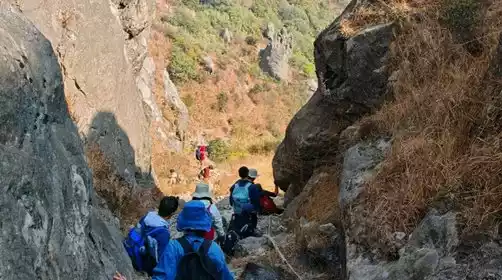Day 1 Guangzhou → Fogang → Pig Brain Stone → Guangzhou
07:30
Meet and sign in at Kecun Exit B (Line 3 & Line 8) and look for the yellow China-TravelNote flag
08:00
Depart on time, interact with the team leader along the way, and head to the destination with laughter and joy
10:00
Get off the bus at the destination, do some warm-up exercises and start climbing. After passing through the jungle, there are rocky slopes waiting for everyone to challenge.
12:00
At noon, we rested on the platform at the pass and had a picnic on the spot. After the rest, we officially headed to the summit. The whole way was a rocky slope, and we climbed to the top with the help of ropes.
3:00 PM
When taking photos at the top of the mountain, remember to pay attention to safety and go down the mountain in time. The path is steep, so be careful to support each other.
5:00 PM
After a quick descent back to the convenience store at the foot of the mountain, we restocked our supplies and boarded the bus back to Guangzhou. We arrived back around 7:30 PM, marking the end of a wonderful day. We agreed to see you next time at the Tourists Arena.








